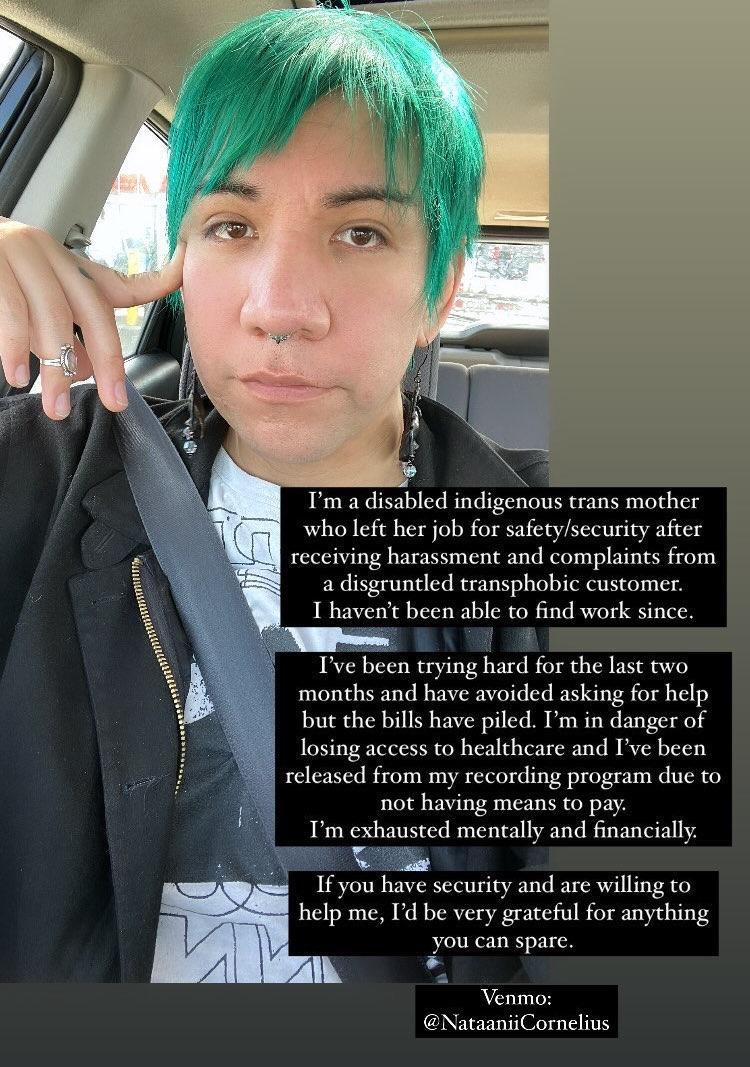From Sabotage Noise Productions:
In Aberdeen:
In Olympia:
In Bremerton:
Across WA:
In Everett:
In Oregon:
The Unhoused Continue To Be Harassed By The City Of Aberdeen, Sweeps Now Monthly
A half million dollars to buy a permanent homeless shelter building in Grays Harbor County is officially on the table.
A draft request for proposals appeared on the Grays Harbor County Board of Commissioners Agenda three separate times in the last month before being approved Tuesday by commissioners Kevin Pine and Jill Warne. Commissioner Vickie Raines was not present to vote at the meeting.
According to the draft document approved Tuesday, applicants have until April 30 to submit proposals to the county for up to $500,000. The one time award can only be used for capital investment — purchasing or improving property — in an emergency homeless shelter. The recipient will be responsible for funding continued operations.
The board hesitated to release the funds at its last meeting Feb. 27, after a public commenter threatened to bring legal action against the county for its solicitation and Commissioner Raines suggested the initial award be lowered to an amount of $350,000.
The shelter money will come from county document recording fees. The fees are one of the sources for the county’s Homeless Housing Fund, which supports a slew of other projects.
With the county’s money on the table, focus will shift to the shelter’s location — the factor that has most commonly squashed local shelter efforts of the past few years. Last year, after the Aberdeen City Council and mayor requested not to host a temporary winter shelter within the city limits, Pine and former Mayor Pete Schave started searching for a permanent site. Schave said last year they had found a location “about as perfect as you can get” just outside the city limits of Aberdeen.
Aberdeen City Administrator Ruth Clemens told The Daily World in February that the city intends to apply for the funds to purchase a shelter site but did not confirm the location. Clemens urged county commissioners to approve the request for proposals when it first appeared on the agenda Feb. 13.
The county’s request calls for a “low-barrier, high-intensity/co-located service model.” The shelter must operate in a way that aligns with the county’s five-year homelessness plan. The low-barrier model means the shelter wouldn’t deny entry based on sobriety, criminal history or entry into programs, but doesn’t mean the facility can’t implement rules for safety of the staff and guests.
The facility the CIty has been dreaming about is likely their version of an open air prison over by the old Juvenile facility in Junction City. This would put the unhoused at the mercy of the City, a dedicated opponent of their rights and health and safety.
At the City level things aren’t shaping up much better. They have a supposed building site picked out but refuse to share it with the public. There are fears of Aberdeen becoming a “homeless utopia” whatever the fuck in Christ that means. While the City seems hesitant to even accept its funds for its proposal from the County.
With several sources of funding in place to address Aberdeen’s vexing problem of homelessness, city council members and leaders met Wednesday evening to discuss the path forward and if the city should act on an immediate solution — the purchase of a permanent shelter.
Sharing thoughts in an informal workshop, council members expressed concerns about partnering with Grays Harbor County, ongoing shelter costs, and whether or not a shelter would produce identifiable results and allow for greater enforcement of camping ordinances.
While there was doubt in Wednesday’s discussion that the city should get involved with addressing social issues like mental health and housing directly, others said too much time had passed without the city taking substantive action.
The city’s committee on homelessness has worked for more than a year to survey the community and gather input on the issue, while City Administrator Ruth Clemens has reached out to other jurisdictions including the county for help.
In Wednesday’s discussion, council members expressed motivation to act, but did not come to a clear consensus about the potential purchase of a homeless shelter.
Money could come from several sources: Grays Harbor County is soliciting applications for up to $500,000 for capital investment in a shelter; the state Legislature allocated $20 million for unsheltered homeless in its 2024 capital budget; the city will receive $1.2 million this month from a state opioid settlement and has already budgeted $200,000 from the general fund for homelessness.
The city has identified a potential building to serve as the shelter but has not publicly released the location. According to the city’s legislative one-pager on the shelter, the goal is to renovate a building to use as a transitional shelter with coordinated services, use a “scattered-site” model to create more low-income housing units, and create safe vehicle parking.
The county’s request for proposals for funds to buy a shelter, approved by commissioners March 5, states that the model will be a “low-barrier, high-intensity/co-located service model,” and should work toward offering physical and mental health treatments, substance abuse treatment, and access to housing and employment resources.
The city would have to apply for funds by April 30. But council members said they were worried about the legal details of the county’s request, especially a stipulation requiring a purchased building to be used as a homeless shelter “for the useful life of the resulting asset (typically 15-30 years),” or else the county would be reimbursed.
“I don’t want the RFP (request for proposals) at all,” said Councilor Debi Pieraccini, adding that Aberdeen could pursue the shelter project without the county funds.
“We could not live up to that RFP, it’s impossible,” she said. “Nobody could. We would be signing a contract with them for 30 years. We would be bound to it and then if they don’t live up to what they want us to do, we would have to pay them back anyway.”
“Let’s do it our way,” she added.
Councilor Liz Ellis advocated in favor of applying for the county funds.
“I just got this horrible wave of sadness hearing from my fellow colleagues that you are not seeing this RFP as an opportunity for Aberdeen,” Ellis said, citing the struggles the city has faced in providing safe encampments.
“We’ve missed so many opportunities over all these years, and if this council is going to let this one go by, we have totally let down this community,” she said.
Ellis also called the 30-year requirement “ridiculous,” but said the city should ask the county to amend its proposal to align with the city’s goals.
Sidor took it a step further.
“If the county is receiving money, state, federal or otherwise, and it’s supposed to be for the homeless and they’re not dedicating and using it, the city should move forward by filing a lawsuit against the county,” he said.
Along with concerns about funding shelter operations and spending general fund dollars, Councilor Kacey Morrison said she needed “assurances from APD and legal that the ordinances we already have on the books are perfectly fine are actually going to be enforced.” This is the fascist contingent’s only concern, that Aberdeen Police be allowed to legally harass and detain the unhoused finally. She thinks that if they open up this shelter the Martin V Boise protections that have been forestalling police enforcement of certain anti-homeless ordinances can be lifted. Federal court rulings have said that cities cannot enforce anti-camping ordinances if there are no shelter beds available. But not only that, there have to be available shelter beds, which means Aberdeen would have to oen a 250 bed shelter. Something they are unlikely to do.
Caldwell said that by adding a shelter, “you are able to do arrests for behaviors, not for being homeless or having addiction, but those behaviors attached to that. Because there is no shelter in the area, there’s no ability for law enforcement to do the accountability aspect because there’s nothing there. The federal laws trump everything.”
Even with the potential for greater enforcement with a shelter, some council members still fear that purchasing a shelter would make Aberdeen a “homeless utopia,” according to a question posed Wednesday evening by Clemens, who said she had heard that argument before.
Sidor said that as a council member he would be “absolutely” willing to invest city money in buying a shelter facility and called homelessness a “number one priority.” He said the shelter should include “security onsite. We need cameras, we need patrols we need guards — I’m not talking about creating a jail or a prison, but we need people there to ensure that everybody is going to be safe, laws are going to be abided by.”
They also realize the ability they will have to divide this population along lines that the City gets to draw. Sidor also expressed a desire to make a “clear segregation” between homeless people struggling with substance abuse, mental health or other problems who are “interested in making a change in their life” from those who “don’t give a damn.”
“If that can be identified and segregated in some way and addressed, versus those who it’s just their lifestyle choice,” he said.
Some Councilors thought that categorizing and means testing individuals to determine their level of care would somehow be appropriate. Councilor David Gakin said homelessness shouldn’t be addressed with blanket solutions. He proposed creating a system that would categorize people based on their situation, giving examples that temporarily homeless people could be “level green,” elderly people could be “level blue,” while people with a single drug addiction would be “orange or yellow.”
Toward the end of the discussion, Orr stressed the importance of investing in a shelter. His concerns as Mayor being primarily economic, saying that investment in the community would happen (read Emmert) as soon as Aberdeen evicts its unhoused population.
“Whatever ball you guys want to kick down the road, we have to get this property,” he said.
“There are businesses, groups that have money that would love to invest in our downtown, and they’re just waiting for us to take this homeless issue out of the picture,” Orr said. “A soon as that happens, there will be investment downtown that will add more tax dollars.”
Back at the County though:
The County Commissioners get bullied into stalling the release of funds because of legal threats from one citizen. Two weeks after the Grays Harbor County Board of Commissioners first officially considered awarding funds for the purchase of a permanent homeless shelter, the money still hasn’t been put on the table.
Two commissioners said at a Tuesday meeting they wanted to wait at least one more week before putting forward $500,000 for another entity to buy or renovate a homeless shelter property, citing concerns about the future of a homeless fund and potential legal concerns raised by a public commenter at the meeting. That was two weeks ago the money was tabled so legal staff could further review the document outlining the county’s request for homeless shelter projects.
District 3 County Commissioner Vickie Raines made the initial suggestion Tuesday to hold off on issuing the request for proposals.
“I just want to make sure when we approve an RFP (Request for Proposals) that there’s no question on it, that it’s going to move forward that there are no legal issues,” Raines said.
During discussion, Raines said she “raised an eyebrow” earlier in the meeting when a public commenter, Steve Jensen, said the county’s request for proposals was on the same course as one in San Diego that became defective because it did not include feasibility study guidance to respondents. Jensen claimed a request for proposals was withdrawn after he “legally challenged” it on those grounds.
Addressing the board for six minutes after another individual yielded his time, Jensen also expressed his disapproval of the shelter initiative, including concerns that the county money would not be enough to continually operate the shelter, and that a low-barrier shelter without mandated sobriety — the statewide model and a requirement for emergency housing projects — wouldn’t be effective.
In a written statement, Jensen said told commissioners if the county approved the request for proposals he would “rabidly and constantly wear you out and down in court.”
The Daily World couldn’t verify Jensen’s claims about his legal challenges to San Diego shelter proposals.
“I’m okay with waiting a week to make sure that legal can review and make sure we’re covered in that feasibility area, because that is concerning, and I don’t recall feasibility being part of the requirement,” District 1 Commissioner Jill Warne said.
District 2 County Commissioner Kevin Pine has pushed the board during February meetings to promptly approve the RFP document, which was first presented Feb. 12. Issuing the request would open an application period slated to end April 30. Commissioners would then evaluate applications and award funds to a qualifying agency of their choice.
“I think it’s imperative for this community to do something, step forward,” Pine said during Tuesday’s meeting. “We could continue to do nothing for our community and just look for the perfect solution, and we wait for another year, two, three years down the road and still do nothing?”
The most recent shelter discussions are a role reversal from years past, as Raines has been supportive of shelter proposals while Pine and Warne have hesitated. In 2021, Pine and Warne passed on an opportunity for nearly $1.5 million in state and federal funding to develop a homeless shelter in Aberdeen, stating they were not in favor of providing a “low-barrier” shelter that did not mandate sobriety or treatment for an overnight stay.
Last winter, Pine and Warne backed away from a contract for a temporary shelter in Aberdeen at the behest of the mayor and city council. Shortly after that, Pine and Aberdeen Mayor Pete Schave began a search for a permanent shelter site.
Pine said in an interview Wednesday he’s in support of a “safe secure location for the unhoused, and at the same time it will give a reprieve to our local businesses and citizens.”
Warne acknowledged that the shelter won’t be able to turn away guests based on sobriety, something she detests, but said she wants the shelter to be a “doorway into the rest of the programs and getting help” as well as a “tool to give the police the ability to do their jobs.”
“It’s going to serve the community as a whole,” Pine said. “Will it solve the problem, no, we’ve always had homeless. Will it alleviate — that’s the goal. But doing nothing is not an option.”
Aberdeen ramps up cleanup at homeless camps
City will temporarily displace campers once per month to remove debris, sweep streets. Thanks to the Homeless Response Committee, which has only responded by destabilizing people at cam with these sweeps.
Intensive cleanups at Aberdeen’s major homeless camps near the Chehalis River bridge will occur more frequently this spring and summer as the city looks to curb trash and waste accumulation.
During the cleanups, homeless residents at the River Street camp are given a chance to gather belongings and move them temporarily to a property on the opposite side of the railroad, while city workers use brooms and heavy machines to scoop remaining structures and debris into dump trucks. Homeless residents move back to the area abutting the chain link fence on River Street, either with new tents or to rebuild tarped structures, after street cleaners scrub the area.
That process occurred twice in 2023 but will now happen monthly.
Aberdeen Mayor Doug Orr said Wednesday the city believes that schedule will reduce buildup and save money spent on staff tending day-to-day trash pickups.
The city has spent a little more than $300,000 on downtown and homeless camp trash cleanups since it started tallying and reporting that data at the beginning of 2023. About $137,000 was spent during the first seven months of that period while $165,000 was spent during the latter seven months, with an overall average of about $21,500 per month.
Wednesday’s cleanup was the third since the city’s homeless response committee initiated the action in March 2023. That month the city spent an extra $10,000 on additional staff an equipment for the cleanup, which took an entire day. That wasn’t the case during another big cleanup in September, a month the city spent $20,000.
CCAP expanding affordable modular housing projects
The agency is slated to deliver 36 new units scattered across Grays Harbor County.
With recent investments from the state and county, the Coastal Community Action Program, the local coordinated entry agency, is working to bring dozens of these units — modular homes — into Grays Harbor County as affordable housing.
In the next few months, 24 modular homes could be serviceable in Aberdeen and another 12 elsewhere in the county by the end of the year, tailored as permanent supportive housing for people who might otherwise be homeless.
Federal spending bill sends money to police station, dam projects
Congress avoided partial government shutdown and inked bill including $1.8 million for Harbor. Just what we needed…a new police station. Just when police violence and harassment is at an all time high Cities across the country are doubling down on their funding and construction of new police facilities to stem the upset at the very police that are being funded. This is instead of funding much need social services, and will in fact exacerbate the problem of crime in our neighborhoods.
Contract with Aberdeen could fill Cosi cop void
Neighboring city already provides “mutual aid” to Cosmopolis.
The Aberdeen City Council Wednesday evening gave the nod to Police Chief Dale Green to continue working on a contract that would lend officers for emergency situations to Cosmopolis during the city’s budget crisis.
Cosmopolis laid off half of its police department earlier this year and the city’s general fund is expected to plunge into a $63,000 deficit by the end of March.
Green said Cosmopolis, with its department whittled down to Chief Heath Layman and one other officer, approached Aberdeen for assistance in February, and Cosmopolis City Administrator Darren Raines then came forward with a concrete proposal.
According to a proposed agreement, APD would be responsible for covering 63% of the hours for Cosmopolis, which, at an expected rate of $283 cost per call, would amount to about $10,300 per month.
That amount was calculated by multiplying CPD’s call volume from last year — 689 — by the two-thirds portion Aberdeen would be expected to take and multiplying that by the call cost.
This grotesque use of the term Mutual Aid is an example of how the system functions to restore itself in times of crisis. Even when a whole town essentially goes bankrupt their policing functions cannot be allowed to be affected. Will other services be cut? Certainly, but never the police.
Hoquiam schools to cut $2 million in spending
District will reduce staff before next school year as federal pandemic relief expires. As money comes from the Federal government to build Aberdeen a new police station, Hoquiam is having to cut its staff.
The Hoquiam School District is working on a plan to reduce spending by $2 million by cutting some staff before the start of the 2024-2025 school year in the fall, an action officials say is needed to slow the depletion of the general fund as federal pandemic dollars expire.
The district’s Board of Directors at a March 21 meeting gave authority to Superintendent Mike Villarreal to draft the reduction in force plan, which will be presented at a future board meeting for approval. A resolution approved by the board Thursday states the reductions could include administrative, certificated and classified staff.
“It hurts,” Villarreal said Thursday. “I know those conversations affect families.”
Villarreal said the district saw the writing on the wall last school year as it looked ahead to 2024, which carries an August deadline for school districts to spend pandemic relief funding from the American Rescue Plan. Hoquiam will spend its final $3.3 million this year out of $7.7 million it received since 2021, according to Keith Ounsted, the district’s business manager.
Environmental groups sue state to halt Westport golf proposal
Suit claims settlement with old golf developers prohibits wetland fill at Westport Light State Park
Grays Harbor environmental groups filed a lawsuit March 29 to halt a significant and controversial golf course development at a state park in Westport as it moves through environmental review.
The lawsuit, filed by the Friends of Grays Harbor and Grays Harbor Audubon Society, claims building the proposed links would violate a settlement prohibiting the filling of wetlands in Westport Light State Park and break state laws for intended use of park lands.
Environmentalists are seeking a court to declare whether or not the agencies vetting the proposal are bound by years of previous challenges to golf course projects at the same property and issue an enforcement order to stop the project.
“Creating the course would destroy one of the last remaining intact large scale interdunal wetlands and take this public land and convert it to private use,” said Arthur Grunbaum, president of the Friends of Grays Harbor, said in an April 4 announcement.
The group filed the lawsuit in Thurston County Superior Court.
Four years after getting the nod from the State Parks Commission to move forward with planning a links-style golf course in the park, Westport Golf Links developers have completed scoping and analysis and are now budging through the environmental review and permitting process, with a draft Environmental Impact Statement expected in the coming weeks.
Final approval of the project lies in the hands of the State Parks Commission. The lawsuit hopes to put the brakes on the project before it gets to that point, claiming existing legal precedent doesn’t allow for a golf course in the park.
The heart of the suit draws from a decades-old dispute over another golf course proposal at the same site, the 270-acre Links at Half Moon Bay. In 2007, Friends of Grays Harbor reached a settlement with the former developer and the city of Westport that set environmental restrictions on development, including that the course would not be allowed to fill any wetlands in during construction. The project was later abandoned.














